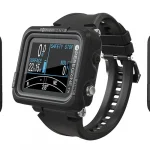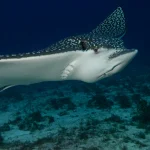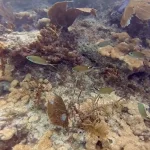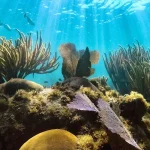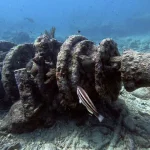Table of Contents
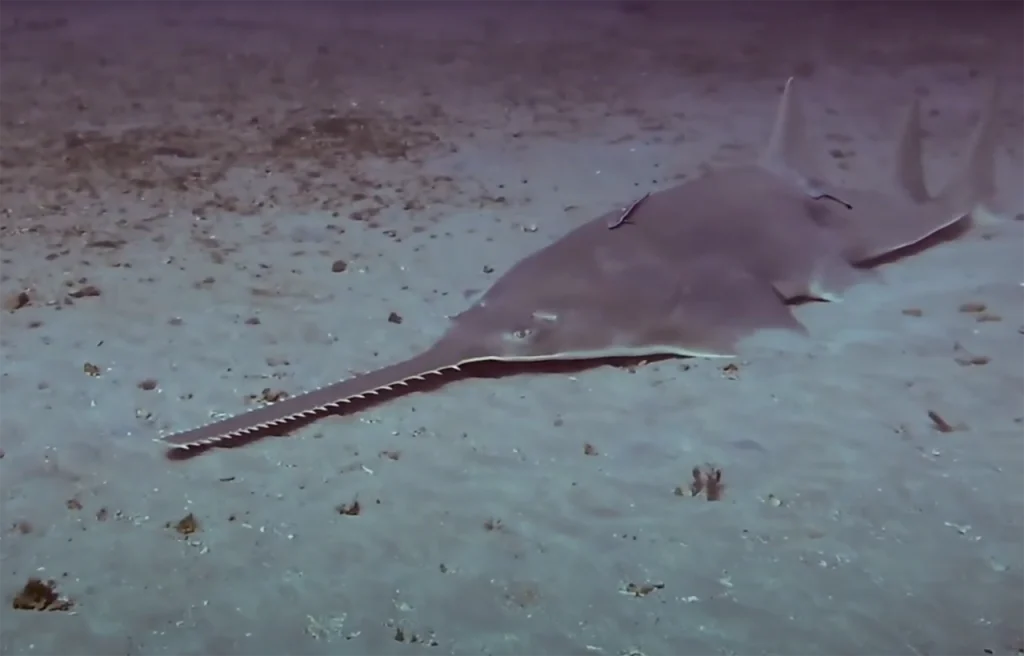
During August and September, the site becomes particularly spectacular with Goliath grouper spawning aggregations, potentially hosting over 50 of these massive fish.
Article at a Glance
- Location: Bonnie’s dive site is situated in Jupiter, Florida, known for its vibrant marine life and stunning underwater landscapes.
- Depth Range: Dives typically range from 60 to 90 feet, making it suitable for advanced divers.
- Visibility: Average visibility is around 50 feet, with conditions varying from 25 to 60 feet depending on the season and weather.
- Best Time to Dive: The ideal diving season is from January to April, with notable Goliath grouper spawning occurring in August and September.
- Marine Life: Expect to encounter diverse species including Goliath groupers, loggerhead turtles, reef sharks, and colorful tropical fish.
- Skill Level: The site is recommended for advanced divers due to depth, current conditions, and the need for strong buoyancy control.
- Photography Opportunities: Excellent conditions for underwater photography, especially with the use of strobes and color correction filters to capture vibrant marine life.
Bonnies Jupiter
- A high-profile ledge dive site with spectacular terrain
- Depth ranges from 60-80 feet
- Easy to navigate for divers
- Ideal habitat for numerous marine species
Diving Experience
The site offers diverse viewing opportunities whether diving at the bottom of the ledge (75-80 feet) or along the top (60-65 feet). Divers can expect an immersive experience with abundant marine life and interesting underwater landscape.
What Marine Life Can I Expect To See?
Large Marine Species
- Goliath groupers residing at the bottom of the ledge at 80 feet
- Loggerhead, Green, and Hawksbill turtles, often napping under or on top of the ledge
- Reef sharks and nurse sharks, particularly in the Donut Hole section
- Southern rays buried in the sand with only their eyes showing
- Occasional Spotted Eagle rays and Cobia
Fish Species
- Green morays, often 5-6 feet long, hunting in crevices
- Snook hiding in deep crevices
- Large schools of Tomtates
- Butter hamlets with translucent blue facial lines
- Blue Hamlets protecting their territories
- Angelfish, grunts, goatfish, wrasses, snapper, and jacks
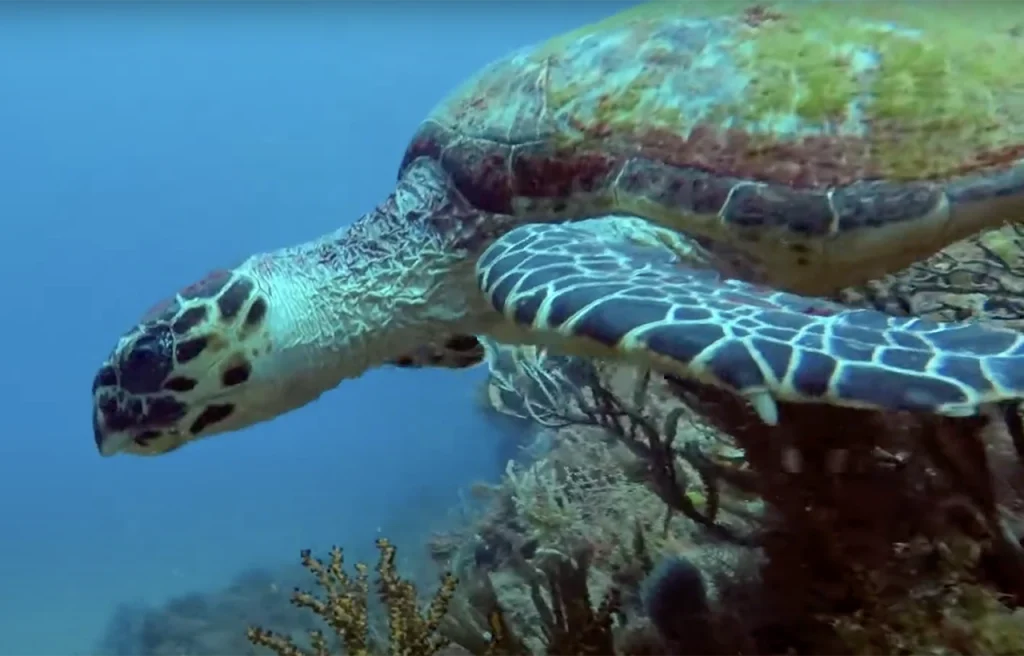
What Do Divers Say About This Site?
Exceptional Crew and Service
- Many divers praise the professionalism and friendliness of the dive crew, noting that they create a welcoming atmosphere. Reviewers often mention how the crew is attentive and helpful throughout the diving experience, making it enjoyable for both beginners and experienced divers alike.
Diverse Marine Life
- Divers frequently highlight the abundance of marine life, including sightings of Goliath groupers, loggerhead turtles, reef sharks, and various colorful fish species. The presence of large marine creatures adds to the thrill of diving at this site, with many divers expressing excitement over encounters with these animals.
Good Visibility and Conditions
- While conditions can vary, many divers report good visibility (often around 40-60 feet) and manageable currents, which enhance the diving experience. This allows for better exploration of the underwater terrain and more opportunities to observe marine life.
Memorable Experiences
- Several divers recount their memorable experiences, including first dives after certification, noting that the staff made them feel safe and supported. The site’s rich biodiversity and beautiful underwater landscapes contribute to these unforgettable moments.
Key Information
| Category | Details |
|---|---|
| Location | Bonnie’s Dive Site, Jupiter, Florida |
| Depth Range | 60 to 90 feet (approximately 18 to 27 meters) |
| Visibility | Typically 25 to 60 feet; averages around 50 feet |
| Best Time to Dive | January to April; Goliath grouper spawning in August-September |
| Skill Level | Advanced divers recommended |
| Marine Life Highlights | Goliath groupers, loggerhead turtles, reef sharks, green morays, and schools of tropical fish |
| Current Conditions | Variable; can be strong; drift diving techniques required |
| Photography Opportunities | Excellent for underwater photography; use strobes and color filters |
| Safety Considerations | Monitor air supply, maintain buoyancy control, and dive with a buddy |
Highlights of Diving This Site?
Marine Life Diversity
- Abundant Species: Divers can expect to see a variety of marine life, including Goliath groupers, loggerhead turtles, green moray eels, and reef sharks. The site is also known for large schools of tropical fish, enhancing the underwater experience.
Unique Underwater Topography
- Ledges and Crevices: The dive site features impressive underwater structures such as high ledges and crevices that create ideal habitats for marine species. This diverse topography allows for exploration and discovery of hidden marine creatures.
Visibility and Conditions
- Good Visibility: Divers typically enjoy visibility ranging from 25 to 60 feet, with the best conditions often occurring from January to April. This clear water enhances the overall diving experience.
Seasonal Highlights
- Goliath Grouper Spawning: During August and September, divers can witness the spectacular spawning aggregations of Goliath groupers, where large numbers of these fish gather, providing a unique spectacle.
Photography Opportunities
- Vibrant Ecosystems: The rich marine life and colorful underwater landscapes make Bonnie’s an excellent site for underwater photography. The clear waters and diverse species offer numerous opportunities for capturing stunning images.
My Favorite Dive Computers
I have compared the 3 top diving computers for each category to help making the right choice easier:
Iconic Spots At This Site
The Swim-Through Tunnel
- This is a defining feature of the Tunnels dive site, where divers navigate through underwater tunnels filled with marine life. Expect encounters with Goliath groupers, reef sharks, and vibrant schools of fish as you explore this unique structure.
The Donut Hole
- Located towards the end of the dive, the Donut Hole is famous for its congregation of Caribbean reef sharks. Divers often describe exhilarating experiences as these magnificent creatures swim in and out of this area, creating a thrilling atmosphere.
Area 51
- Known for its high ledge and rich marine life, Area 51 offers encounters with curious reef sharks shortly after descending. The depth ranges from 65 to 90 feet, providing ample opportunities to see loggerhead turtles, hawksbill turtles, and various tropical fish.
Scarface (Spadefish Point)
- Named after a legendary scarred green moray eel, Scarface features stunning underwater topography. Divers frequently spot green, loggerhead, and hawksbill sea turtles, along with Goliath groupers and diverse reef fish in this area.
Lighthouse Dive Site
- This site aligns with the Jupiter Lighthouse and features depths between 61 to 77 feet. It’s known for a wide variety of marine life, including reef sharks, eels, Goliath groupers, and schools of different reef fish. It’s also popular among divers looking for lobsters.
Environmental Conservation Efforts at Bonnies Jupiter
Sawfish Bay Marine Restoration Project
This multi-phase initiative focuses on restoring marine habitats in Sawfish Bay, which is adjacent to the dive sites in Jupiter. The project aims to:
- Install a living shoreline
- Promote seagrass and oyster growth
- Enhance water quality
- Recover threatened species
- Improve ecosystem resilience (1)
These efforts benefit the surrounding waters where diving occurs, including sites like Bonnies.
Jupiter Inlet District Initiatives
The Jupiter Inlet District actively works to:
- Maintain navigable channels
- Protect natural resources in the Jupiter Inlet and Loxahatchee River-Lake Worth Creek Aquatic Preserve
- Safeguard wildlife habitats
- Promote sustainable recreational activities
These efforts indirectly support the health of dive sites in the area (4), including Bonnies.
Marine Life Protection
Conservation efforts in the region focus on protecting various marine species that frequent dive sites like Bonnies, including:
- Goliath groupers
- Sea turtles
- Various shark species
These efforts are crucial for maintaining biodiversity and ensuring that these species can thrive in their natural habitats.
Community Engagement and Education
Local dive operators often engage in conservation education, emphasizing responsible diving practices that minimize environmental impact. This includes:
- Encouraging divers to avoid touching marine life (3)
- Refraining from disturbing habitats during dives
- Promoting awareness of the delicate marine ecosystem (2)(4)
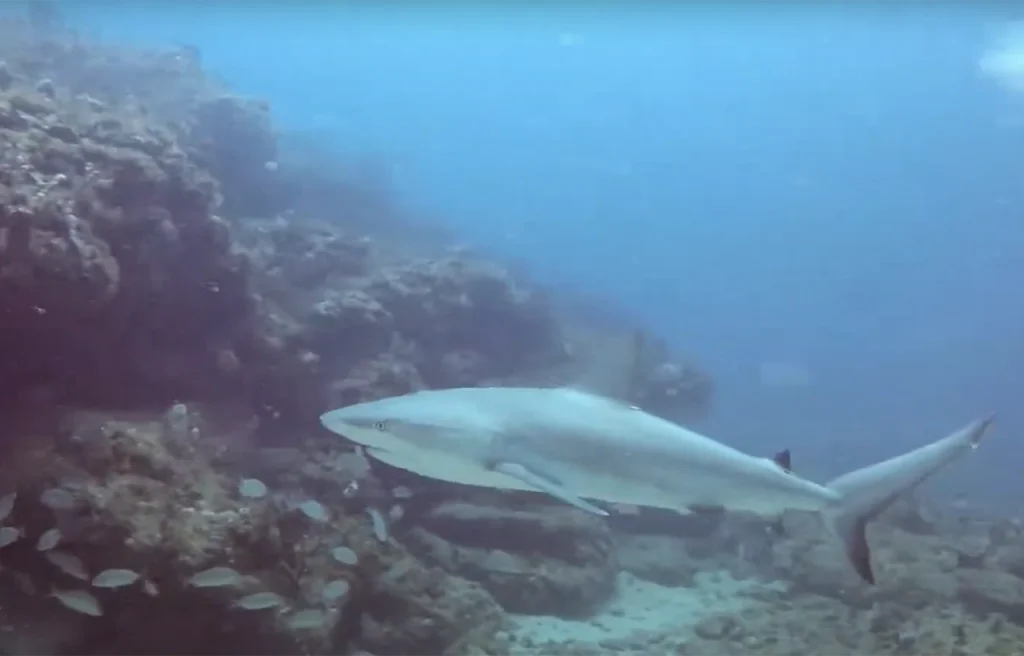
Maximizing Your Diving Experience at Bonnies
Dive Preparation
- Choose the optimal diving season from January to April for best visibility
- Bring essential gear including:
- Underwater flashlight
- Surface marker buoy (SMB)
- Nitrox for extended bottom time
- Plan for depths between 60-80 feet, suitable for advanced divers
Marine Life Encounters
- Look for key marine species:
- Goliath groupers
- Loggerhead and Hawksbill turtles
- Reef sharks
- Large green moray eels
- Schools of tropical fish
Diving Techniques
- Practice drift diving skills
- Move slowly and deliberately to observe marine life
- Maintain proper buoyancy control
- Use wide-angle camera lens for best photography opportunities
- Be prepared for potential currents
Best Viewing Strategies
- Explore ledges and crevices carefully
- Check underwater tunnels and hidden areas
- Descend gradually to avoid startling marine life
- Maintain a calm, non-threatening approach to maximize wildlife interactions
Safety Considerations
- Dive with a experienced buddy
- Monitor depth and air consumption
- Be comfortable with advanced diving conditions
- Respect marine life and underwater environment
Capturing Memories at Bonnies: Photography Tips
Equipment Essentials
- Use Proper Housing: Ensure your camera has a reliable waterproof housing to prevent leaks and damage.
- Strobe Lights: Consider using an external strobe light to enhance colors and reduce backscatter, especially in deeper waters (6).
- Color Correction Filters: Employ color correction filters to improve image quality and remove unwanted blue and green hues from your photos.
Shooting Techniques
- Get Close: Aim to be within 12 inches of your subject. This minimizes the water between the lens and the subject, reducing color loss and enhancing detail.
- Use Natural Light: Take advantage of natural light when possible. Shooting at shallower depths (less than 20 feet) allows for vibrant colors (5).
- Shoot at Eye Level: Position your camera at eye level with your subjects for a more engaging perspective.
Camera Settings
- Shutter Speed: Experiment with shutter speeds; faster speeds can capture sharp images, while slower speeds allow more light but may blur moving subjects. A medium shutter speed combined with a strobe often works well.
- ISO Settings: Keep ISO low (around 100) to minimize noise and backscatter. Increase it only in low-light conditions.
- White Balance: Use auto white balance when using flash; switch to custom white balance when relying on natural light.
Composition Tips
- Fill the Frame: Try to fill the frame with your subject, avoiding empty space that can detract from the image.
- Experiment with Angles: Don’t hesitate to try different angles and perspectives. Shooting from below or at an angle can add depth and interest to your photos.
Post-Dive Editing
- Photo Editing Software: Utilize software like Adobe Lightroom for post-processing. You can enhance colors, adjust exposure, and remove any unwanted elements from your images.
Safety Considerations
- Always prioritize safety while shooting. Monitor your air supply, maintain buoyancy control, and avoid disturbing marine life.
Frequently Asked Questions
When is the best time to dive Bonnies?
The best time to dive at Bonnies in Jupiter, Florida, is generally considered to be from January through April. During this period, divers can expect optimal conditions and a variety of marine life encounters:
Shark Season (January – March): This is a prime time for seeing lemon sharks and migrating blacktip reef sharks, making it an exciting period for shark enthusiasts.
Sea Turtle Season (March – September): The likelihood of encountering sea turtles increases significantly during this time, as Jupiter has one of the densest sea turtle nesting populations in the nation.
Goliath Grouper Season (August – September): For those interested in larger species, goliath groupers aggregate to spawn during late summer, offering spectacular sightings.
What is the visibility like while diving Bonnies?
Based on recent dive reports, the visibility at Bonnie’s dive site in Jupiter, Florida varies, but typically ranges around 50 feet. Recent dive reports indicate:
Visibility Characteristics
– Average visibility: 50 feet
– Temperature: Around 75-79 degrees
Conditions can fluctuate based on:
– Tides
– Currents
– Weather patterns
Factors Affecting Visibility
– Proximity to Jupiter Inlet can impact clarity
– Seasonal variations influence underwater conditions
– Sandy bottom and currents may occasionally reduce visibility
How deep are the dives at Bonnies?
Dives at Bonnies in Jupiter, Florida, typically range from 60 to 90 feet (approximately 18 to 27 meters). The depth profile can vary depending on the specific dive site within the area:
Top of the Ledge: Generally around 60 to 65 feet.
Bottom of the Reef: Can reach depths of 80 to 90 feet, making it suitable for advanced divers who are comfortable with deeper diving conditions.
Is Bonnies suitable for beginners?
Bonnies dive site in Jupiter, Florida, is generally considered not suitable for beginners due to several factors:
Depth: The dives typically range from 60 to 90 feet, which can be challenging for novice divers who may not be comfortable with deeper dives or managing their buoyancy effectively.
Current Conditions: The site can experience varying currents, which may complicate diving for those without sufficient experience in managing such conditions.
Marine Life Interactions: While encountering marine life like Goliath groupers and reef sharks can be thrilling, it may also be intimidating for less experienced divers.
Is Bonnie’s suitable for advanced divers?
Dive Characteristics for Advanced Divers
– Typical depths range from 60 to 90 feet
– Requires proficiency in drift diving techniques
– Involves managing variable current conditions
– Offers opportunities to encounter diverse marine life
Marine Life Encounters
Advanced divers can expect to see:
– Reef sharks
– Goliath groupers
– Loggerhead and Hawksbill turtles
– Tropical fish species
Recommended Experience Level
The dive sites in Jupiter, such as Bonnies, Area 29 and The Tunnels, are specifically recommended for advanced divers due to:
– Deep dive profiles
– Complex current conditions
– Need for strong buoyancy control
– Challenging underwater environments
Jupiter Dive Sites
- Area 51
- Area 29
- Tunnels
- Loggerhead Reef
- Bluffs Reef
- Bonnies
- Captain Kurls
- Spadefish Point
- Coral Cove Park
- Captain Mike’s
- Julies
- Emerald Charters Shark Dive
- Jupiter Wreck Trek
- Donut
- Scarface Reef Andrew “Red” Harris No Shoes Reef
- Jupiter Inlet
- Step Reef
- Sawfish Bay
- Marine Restoration Reef
- North County Reef
- Lighthouse
- Finz Den
- High Ledge
- Leigh’s Ledge
- Monkey’s Ledge
- Gary’s

